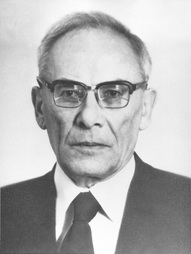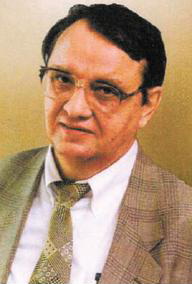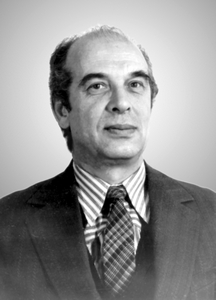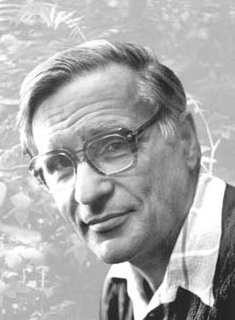Memory Book

Sergey L. Mandelstam (22 February 1910, Odessa – 26 November 1990, Moscow) was a Soviet physicist, Correspondent Member of the Academy of Sciences of USSR (1979), the founder and the first director of Institute of Spectroscopy. He was born in Odessa. His father, L.I. Mandelstam, was a prominent Soviet physicist. S.L. Mandelstam graduated from Moscow State University (1931). In 1931-1935, he worked at the Research Institute of Physics, Moscow State University. In 1935, he became the chief of a laboratory of Physics Institute of the USSR Academy of Sciences, and in 1968 – the director of the Institute of Spectroscopy. In 1944-1947, he was a professor of Moscow Steel Institute, and in 1957 he became the head of the quantum optics department of Moscow Institute of Physics and Technology. His main works were in the field of atomic spectroscopy and its applications and in extra-atmospheric astronomy. Mandelstam studied spectra of highly ionized atoms prepared by his group in laboratory, as well as those of solar flares. He investigated the conditions of ionization and excitation of atoms and ions in plasma, broadening and shift of spectral lines. He was the first to measure the temperature of lightning, and he developed a hydrodynamic theory of spark discharge. He carried out extensive research on the theory and practice of spectral analysis and its implementation in industry. He thoroughly studied the X-ray solar radiation and established that it basically has a thermal nature and consists of a quasi-constant component and slowly varying ones. He discovered the polarization of the radiation and investigated the spectra, structure and location of X-ray flares.

Vladilen S. Letokhov (10 November1939, Taishet – 21 March 2009) was a Soviet and Russian theoretical physicist, a pioneer in laser physics and classic laser cooling, Doctor of physico-mathematical sciences, Professor. He published over 850 articles and 15 books and became the most quoted Soviet scientist over the period of 1973-1988. Letokhov was born in Taishet (Irkutsk region). In 1963 he graduated from Moscow Institute of Physics and Technology and enrolled in post-graduate school of Lebedev Physical Institute, where he worked in 1963-1970 under the supervision of N.G. Basov. In 1970, he passed to Institute of Spectroscopy at the invitation of S.L. Mandelstam, headed the department of laser spectroscopy, held the position of deputy director. At the same time, in 1972 he became a professor of Moscow Institute of Physics and Technology. Among Letokhov’s students are over 70 Ph.D. degree holders. Letokhov’s scientific work was devoted to quantum electronics and its applications, nonlinear optics and laser spectroscopy. He developed methods for generating high-power laser pulses. He studied the interaction of laser radiation with matter, including single atoms and molecules: the multiphoton dissociation, particle detection for highly sensitive analysis, laser cooling of atoms, control of atomic beams and organic molecules by ultra-short light pulses. A number of papers was devoted to laser phenomena in space. His research formed the basis of the work of American scientists, who received Nobel Prize in Physics in 1997.

Roman I. Personov (4 January 1932, Moscow – 17 January 2002) — was a Soviet and Russian physicist and spectroscopist, Doctor of physico-mathematical sciences, Professor, one of the founders of selective laser spectroscopy of complex molecules in solutions. His father was a Soviet writer and playwright Ivan I. Personov. In 1955, he graduated from Moscow Pedagogical State University. In 1959-1970, he was an employee (Assistant Professor, Associate Professor) of department of theoretical physics of Moscow Pedagogical State University. In 1970-2002, he was the head of the laboratory of electronic spectra of molecules of Institute of Spectroscopy. In 1983-2002, he was Head of the Department of Molecular Spectroscopy of the Institute. In 1970 he became Professor of quantum optics department of Moscow Institute of Physics and Technology.
In 1986, 1994, 1995 he was Visiting Professor of Centre de Physique Moleculaire Optique et Hertzienne, University of Bordeaux, France;
in 1993 - Visiting Professor of Laboratoire de Photophysique Moleculaire, University of Paris-Sud, France;
in 1993 - Visiting Professor of Ecole Normale Superieure in Cachan, France;
in 1994 - Visiting Professor of Department of Chemistry, University of California, Riverside, USA;
in 1996 - Visiting Professor at the Institute of Physical Chemistry, University of Vienna, Austria;
in 1996 - Visiting Professor, University of Marburg, Germany;
in 1995, 1996, 1997 - Visiting Professor, University of Bayreuth, Germany;
in 1997 - Visiting Professor at National Taiwan University and the Institute of Atomic and Molecular Sciences of Academia Sinica;
in 1998-1999, the winter semester - Professor, Head of Department of Experimental Physics, Bayreuth University, Germany;
in 2001 - Professor of the Institute of Physical Chemistry, University of Vienna, Austria.
Till 1968 R.I. Personov worked and taught at Physics Department of Moscow Pedagogical State University in the laboratory with Shpolskiy. R.I. Personov and colleagues made two major discoveries in the spectroscopy of impurity centers: the selective excitation of fine-structure spectra (1972) and the method of stable spectral hole burning (1974). In foreign literature, these methods are named «Fluorescence Line Narrowing» and «Persistent Spectral Hole-Burning». In a number of sources, the effect of laser excitation of fine structure spectra is called Personov effect. He was an author of over 150 scientific papers, reviews and monographs. He was awarded the State Prize of the USSR (1985) and the award of A.Gumboldt, Germany (1995).

Sergei G. Rautian (18 December, 1928, Leningrad – 25 January, 2009, Moscow) was a Soviet and Russian physicist, member of the Academy of Sciences of the USSR (1979), Russian Academy of Sciences adviser. His areas of specialization were optics, spectroscopy, quantum electronics and atomic physics. S.G. Rautian was the second son in a large family of famous physicists Professor Gleb N. Rautian (1889-1963) and Doctor of Technical Sciences Lidia I. Demkina (1900-1994). He graduated from Moscow University in 1952. In 1953-1965, he worked at Lebedev Physical Institute under the supervision of G.S. Landsberg. In 1965-1969, he was Head of a laboratory of Institute for Semiconductors of Academy of Sciences of the USSR. In 1969-1971, he worked at Institute for Nuclear Physics of Siberian Branch of the USSR Academy of Sciences. In 1971-1977, he was Head of an Institute of Spectroscopy sector. In 1977, S.G. Rautian became Deputy Director of Institute for Automation and Electrometry of Siberian Branch of the USSR Academy of Sciences and Head of a department of Novosibirsk State University. He worked in the field of optics, quantum electronics and nonlinear spectroscopy. He performed a series of studies on the physics of lasers and laser optics and physics of collisions. He developed new principles of population inversion production, predicted narrow nonlinear resonances in Doppler-broadened spectral lines and studied them. He also investigated the role of collisions in linear and nonlinear spectroscopy. He was married with three children: Alexander, Galina, Maria, who became biologists.






